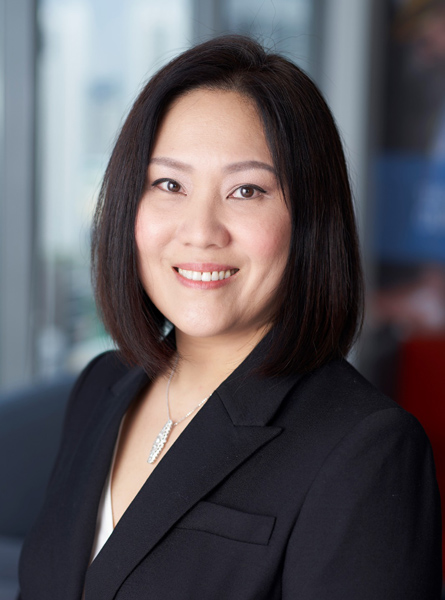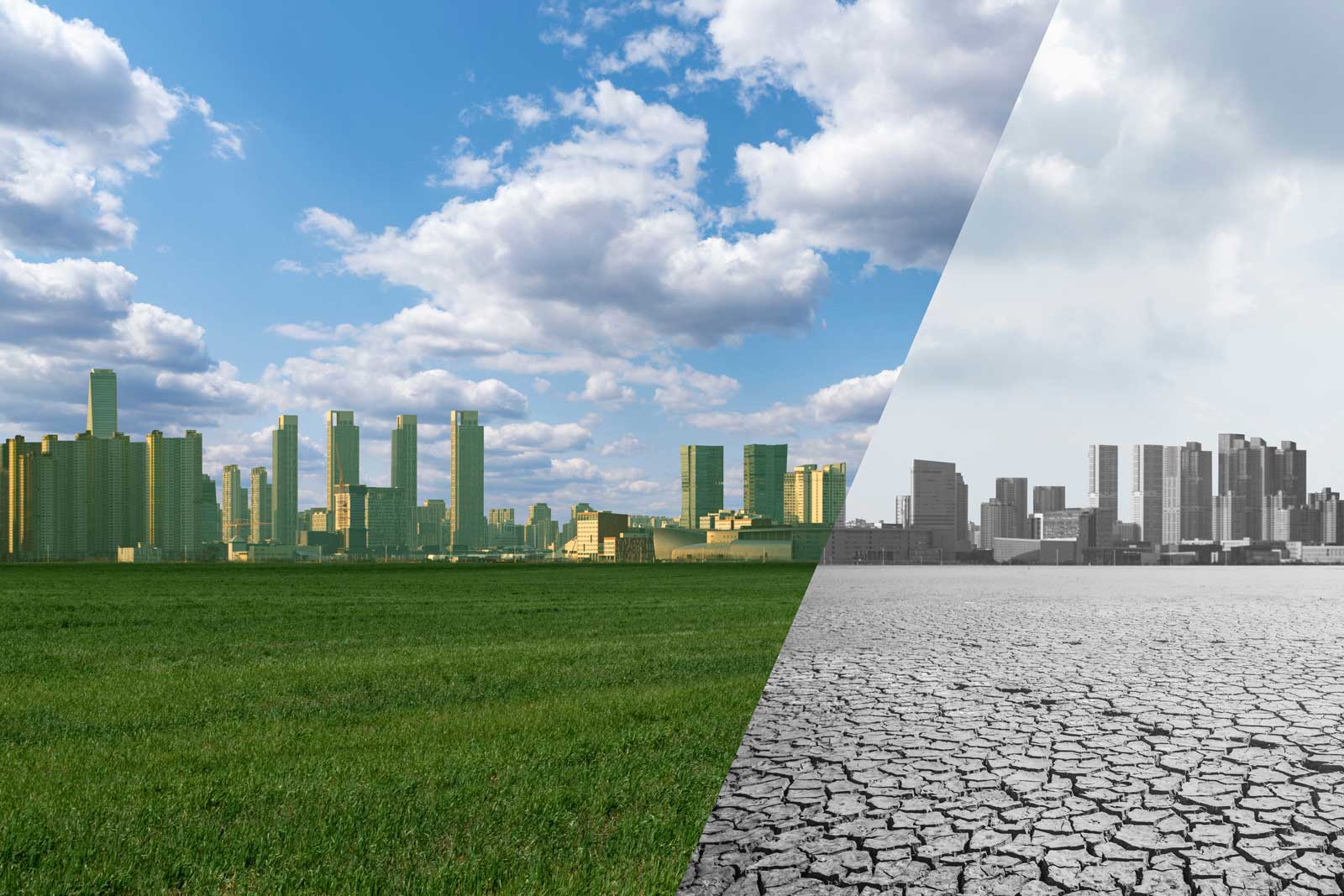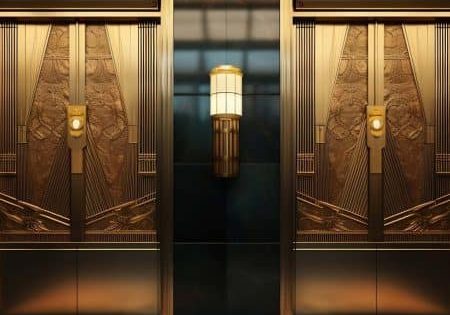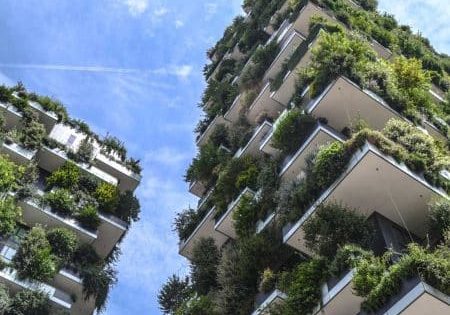Technological and sustainable solutions can make headway for greener buildings and architectural innovations as the world looks more to this topic.
“Shrinkflation” has become a common term of woe, ringing alarms about an inevitable global recession. But few might know that Singapore has actually managed to sidestep it, if not avoid it entirely. Apart from the recovery of tourism, one of the major contributors is actually the construction sector, which added SG$16.8 billion (US$12.49 billion) to the country’s GDP in 2022 alone, and saw a 6.6% year-on-year growth in the second quarter of 2023. But, some would say, with this growth comes the risk of increased damage to the planet. In fact, 20% of Singapore’s carbon emissions come from buildings. What’s more concerning is that only 55% of them have adopted green initiatives.
The task of integrating green initiatives may seem daunting, especially when confronting older and established buildings that face steep integration costs and issues with retrofitting. Sylvia Koh-Gratton (SK), managing director of KONE Singapore, believes the key to kickstarting it may lie in something far simpler than what one would think of — lifts.

With a passion for data, technology and sustainability, Koh-Gratton believes these elements are the driving forces behind the evolution of the built environment sector. Her time leading sustainability innovation and stakeholder engagement programs reflects experience in operationalizing sustainability vision and delivering tangible impact to business operations, qualifying her to speak knowledgeably on the topic. Koh-Gratton spoke with your author (LF) about why businesses are still facing challenges to trim their operational carbon footprint, the details of KONE’s innovative smart building solutions and how this can be replicated across buildings in Singapore, as well as what “People Flow” solutions mean and how that will impact the future of construction and transportation.
LF:Tell me about your role at KONE and your background in this industry and outside of it.
SK: I have more than 20 years of experience in the built environment sector across the Asia-Pacific region. My expertise lies in consulting, asset management, sustainability and smart buildings. Before I joined KONE, I held various roles with CapitaLand, a Singapore-based property developer. One of my significant responsibilities there was leading the “Office of the Future” strategy, where I developed and operationalized the smart building and estate vision. I also had the privilege of leading CapitaLand’s first-ever global sustainability innovation challenge and co-authored the 2030 Sustainability Master Plan that was launched in 2021. Prior to my time at CapitaLand, I served as the managing director of JLL’s Asia-Pacific Consulting business. In that role, I assisted clients with their asset, workplace and operational strategies.
Other companies that I have worked with include General Electric, EY and Shell. I’m deeply passionate about data, technology and sustainability, and I firmly believe that these elements are the driving forces behind the evolution of the built environment sector.
LF:Why is this an important topic for you specifically to talk about? Do you have a larger interest in this area?
SK: According to estimates by the World Green Building Council (WGBC), the built environment is responsible for 39% of global energy-related carbon emissions. Progress in the built environment sector in reducing emissions will have a significant impact on our collective goal of a sustainable world for future generations. My work at CapitaLand leading sustainability innovation and stakeholder engagement programs really opened my eyes to this field and allowed me to have first-hand experience of operationalizing sustainability vision and delivering tangible impacts to business operations.
Sustainability is an important topic and area of focus at KONE. Not only because that’s what our customers expect of us, but also because, as a global leader in our industry, we have the responsibility to lead the charge in tackling the climate issues that affect all of us. As the conservationist David Bower likes to say: “There’s no business to be done on a dead planet!”
LF:How important is accelerating decarbonization at this point in our world?
SK: It is no secret that the world is falling significantly behind on our action plans to limit warming to 1.5°C. If we don’t accelerate decarbonization drastically, we will be looking at 2.4–2.6°C of warming by 2030, according to the United Nations Environment Programme. This is a dangerously high level that would have severe implications on our food chain and ecosystem. We are already seeing deadly floods, forest fires and unseasonal weather conditions these past few years. We need to quicken our pace to decarbonize to protect vulnerable communities and our way of life.
LF:Why is now the time that companies, designers, architects, etc., need to be thinking about this?
SK: Actually, developers, architects and designers have been thinking about and implementing strategies to decarbonize for quite a few years now. New buildings from the last decade are generally designed and built to good energy performance standards at the point of design and construction. However, given the length of time needed from design to completion of construction, by the time a new building is completed, new technology and innovation could mean that it is already not operating at peak performance.
As with all economic decisions, there are compromises that we need to make. Building up cities is necessary for economic progress and housing an increasingly urbanized population, but can we plan, design and build cities and buildings in a more efficient way that would minimize environmental impacts? In Singapore, we are seeing more efforts in conserving old buildings rather than demolishing and rebuilding new ones. But, certainly, more can be done.
We are also constrained by the state of maturity for many new and promising innovations in various areas. These innovations are either not yet technically ready or they still have a significant cost premium to deploy. We need to pick up the pace of innovation in the built environment sector as well.
“KONE’s long-term plans and goals revolve around being at the forefront of sustainability, energy efficiency and environmental responsibility.”
LF:What impact does vertical transportation (VT) have on this issue? And, in what ways can VT and VT companies work toward decarbonization and other goals?
SK: As an integral part of buildings, VT has a role to play in making buildings more efficient, safe and sustainable. Sustainability is one of the focus areas for KONE when we look at investments into innovation.
Areas that VT and VT companies could focus on to contribute to decarbonization include:
- Reduce embodied carbon: Optimize the supply chain. KONE is the first company in our industry to achieve carbon-neutral manufacturing operations globally this year, 18 months ahead of target.
- Improve energy performance of solutions: KONE has a wide range of products with local and international certifications on its energy efficiencies.
- Close the loop and push for circularity: 90% of the metals used in our solutions are recyclable.
- Use data to further optimize performance: KONE 24/7 Connected Services is an award-winning predictive-maintenance technology that uses data to prolong the life of components and reduce breakdowns and entrapments (thereby improving user safety). Equipment data can also be easily shared with building owners and ecosystem partners.
- Continue to innovate: KONE has four R&D/innovation hubs globally, one of which is in Singapore. We have pioneered many innovations that have proven sustainability benefits. Examples include:
- KONE UltraRope™, a patented 100% carbon fiber rope that has twice the lifespan of conventional steel rope and does not use oil for lubrication
- Regenerative drive system that recovers up to 35% of total elevator system energy consumption
- A product range that is compatible with a 100% wooden shaft structure
LF: How can technological and sustainable solutions make headway for greener buildings and architectural innovations? And what do these solutions look like?
SK: While we should do whatever we can today (within the limits of technology and solutions) to reduce emissions, we must also accelerate innovation to enable us to have more pathways to limit warming to 1.5°C. Focus areas of built environment-related innovation are, broadly, as follows:
- Energy-Efficient Building Systems: Innovations that significantly improve the energy performance of key building systems such as HVAC and VT.
- Renewable Energy Transition: Innovations that make the transition easier and cheaper, and significantly improve the yields of renewable energy sources.
- Smart Building Technologies: Innovations that could revolutionize building operations via real-time data monitoring and predictive operations, leading to more efficient resource usage and sustainability gains.
- Eco-Friendly Materials and Construction Practices: Innovations that target core building materials (such as concrete) to reduce embodied carbon, along with eco-friendly construction techniques (such as prefabricated prefinished volumetric construction (PPVC)) that reduce the environmental impact of construction.
- Waste Reduction and Recycling: Sustainable building solutions also focus on waste reduction and recycling. Construction waste is being minimized through better planning, and materials are increasingly being repurposed or recycled.
LF: What, specifically, is KONE/KONE Singapore doing about this? Any specific projects or products that you can mention?
SK: We’re deeply committed to transforming the way people move within buildings and enhancing “people flow” while also focusing on sustainable solutions. It’s been a privilege to work with customers like Singapore General Hospital (SGH), Central Boulevard, JTC and South Beach, who have placed their trust in our solutions.
One of our most significant and impactful projects is our collaboration with SGH on their Elective Care Centre (ECC). This project exemplifies our commitment to transforming the way people move within healthcare facilities, making it not only more efficient but also environmentally sustainable.
“Our vision is to lead the industry in creating a greener, more sustainable future in the VT sector and the broader built environment.”
- The ECC is a critical addition to SGH’s new campus, designed to serve as a hub for elective medical procedures, specialist outpatient clinics, inpatient wards and advanced dental services. These services are pivotal for healthcare delivery and patient care, and our solutions will play a vital role in ensuring seamless and efficient movement within the ECC.
- KONE’s delivery for the ECC includes a comprehensive suite of 49 elevators and 11 escalators from our DX product range. These solutions are not just about facilitating VT, but are designed with a focus on sustainability, energy efficiency and the well-being of building occupants.
- The ECC’s design incorporates various features aimed at achieving sustainability targets in terms of carbon abatement and resource efficiency. Our DX product range is renowned for its high energy-efficiency performance, contributing to a reduction in the building’s carbon footprint.
- The ECC also benefits from KONE’s Health & Well-Being Solution, which includes lift air purifiers and escalator handrail sanitizers. These features not only enhance the health and safety of ECC occupants, but also underline our commitment to creating a hygienic and comfortable environment.
Another notable project is Marina Bay Sands, an iconic landmark, introducing a blend of luxury hotel accommodations, convention facilities, theaters, entertainment venues, dining options and retail spaces to Singapore’s vibrant Marina Bay precinct.
- KONE’s commitment to addressing these challenges led to the implementation of machine-room-less elevators powered by energy-efficient KONE EcoDisc® hoisting machines. These elevators offered a solution that was both space-saving and environmentally friendly, making them ideal for the unconventional architectural features of Marina Bay Sands.
- This is also the first project globally in which we installed Ultrarope. The 55-story towers benefited from the lightweight carbon fiber core with durability and ride comfort. For a building of this size, about 14 t of steel ropes will need to be replaced every seven to 10 years. It has been more than 10 years since the first Ultrarope was installed, and we have not made a replacement yet. Although ~90% of the steel ropes will be able to be recycled, reducing consumption is more beneficial than recycling efforts.
Our commitment to transforming people flow and sustainable solutions has not gone unnoticed. KONE’s dedication to redefining the way people move within buildings has earned us two prestigious awards – the Singapore Environmental Achievement Award in 2023 and the SGBC-BCA Leadership in Sustainability Innovation Award in 2022.
LF: What are KONE’s long-term plans/goals to continue to do this in the future?
SK: KONE’s long-term plans and goals are deeply rooted in our commitment to sustainability and our vision to contribute to a more environmentally responsible and energy-efficient future.
- Lead the Industry With Innovation: We aim to continue setting the industry standard for energy efficiency and sustainability in VT. This involves ongoing research and development to create even more efficient, eco-friendly and technologically advanced elevator and escalator solutions.
- Carbon Neutrality: We have set a target to achieve carbon neutrality across our operations by 2030. We are making good progress, with our global manufacturing operations achieving carbon neutrality recently.
- Energy-Efficient Product Portfolio: We will continue to expand our energy-efficient product portfolio, promoting solutions that not only provide smooth VT but also minimize energy consumption and reduce a building’s carbon footprint.
- Circularity: Embracing the principles of the circular economy, we aim to further extend the lifetime of our products and reduce waste. By harmonizing our elevator and escalator product offerings, we can enhance material savings and contribute to resource efficiency.
- Logistics Optimization: Our global logistics network will be optimized to reduce packaging-related emissions and waste. This includes aggressive measures to minimize our environmental footprint throughout the supply chain.
- Ecosystem Partnerships: We plan to strengthen our collaborations with key stakeholders, including government agencies, industry forums and sustainability organizations, to drive innovation and sustainability within the industry.
- Sustainability Education: Raising awareness and fostering continuous learning about sustainability topics is paramount. We will continue to conduct sustainability roadshows, participate in industry forums and webinars and work closely with organizations like the Building and Construction Authority (BCA) and SGBC to pilot sustainability innovations.
In summary, KONE’s long-term plans and goals revolve around being at the forefront of sustainability, energy efficiency and environmental responsibility. Our vision is to lead the industry in creating a greener, more sustainable future in the VT sector and the broader built environment.
Get more of Elevator World. Sign up for our free e-newsletter.










